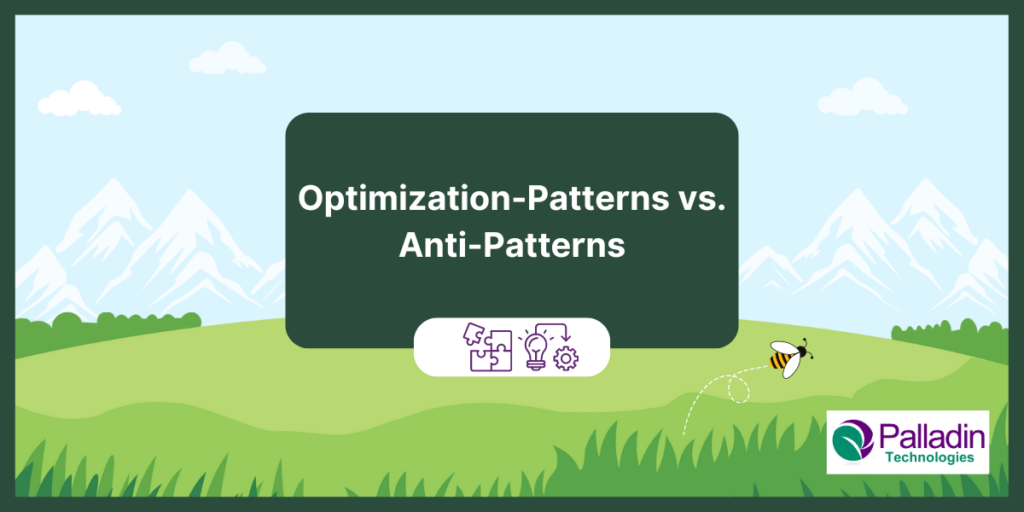The Big Idea: Avoid Anti-Patterns…but What the Heck Are Anti-Patterns?
Optimization-Patterns vs. Anti-Patterns:
What to Look For or Avoid in your Org…let’s consider in the context of Flow, the click-based way to automate your Salesforce org without writing code, as well as some general anti-patterns to avoid…
Salesforce anti-patterns are common mistakes or bad practices that can lead to inefficient or ineffective use of the Salesforce platform. Here are some examples of Salesforce anti-patterns to avoid:
Over-Customization:
Adding too many custom fields, objects, or workflows can make your Salesforce instance difficult to manage, slow to load, and costly to maintain. Only customize when necessary and keep it simple.
Poor Data Quality:
Inaccurate or incomplete data can undermine the value of your Salesforce instance and make it difficult to gain insights or take action. Invest in data quality tools and best practices to ensure clean and consistent data.
Inadequate User Adoption:
Failing to engage users and provide adequate training can lead to low adoption rates and poor results. Develop a comprehensive user adoption strategy and provide ongoing support and training.
Ignoring Best Practices:
Salesforce offers a wealth of best practices, documentation, and community resources to help you get the most out of the platform. Ignoring these resources can lead to missed opportunities and suboptimal results.
Inefficient Processes:
Failing to automate or streamline processes can lead to wasted time, errors, and frustration. Use Salesforce automation tools and best practices to streamline and optimize your processes.
Overall, by avoiding anti-patterns and following best practices, you can ensure that your Salesforce org is efficient, effective, and delivers maximum value to your organization.
Flow Optimization Patterns (What to do):
- Each flow serves a single, specific purpose
- Each step performs a specific, granular task
- Flows are organized in a hierarchical structure consisting of a main flow and supporting subflows
- All user inputs have a clear purpose within the flow
- Users are only asked to provide data when existing system data can’t be used
Flow Optimization: Anti-Pattern (What to do):
- Flows serve multiple purposes and require additional inputs to provide context
- Flows require inputs whose data is not used
- Groups of related steps contain functionality that overlaps with groups of steps in other flows
- Flows ask for user inputs when stored data can be used instead
Need help with Flow or Business Process Optimization? Palladin Tech can help! We help you put rubber to the road to gain traction & accelerate your ROI!
This post partially brought to you by Salesforce Well-Architected and ChatGPT
Learn More About Partnering With Us!

Chief Executive Officer
Brandon Ward, a seasoned leader with 20 years of experience, is the founder of Palladin Technologies, a Crest-level Salesforce consulting partner based in Atlanta with presence in 11 countries and rapidly growing. Specializing in Salesforce.com systems integration and implementation, Brandon founded and has steered Palladin Technology from its inception to achieve a remarkable 4-year CAGR of 118%, driven by organic growth and exceptional service. Under his leadership, Palladin Technologies excels in delivering outstanding outcomes for clients undergoing digital transformations, with emphasis on the telecommunications and media sector and the intersection of subscriber relationships, communications sales, traditional CRM, BSS, and OSS needs.




